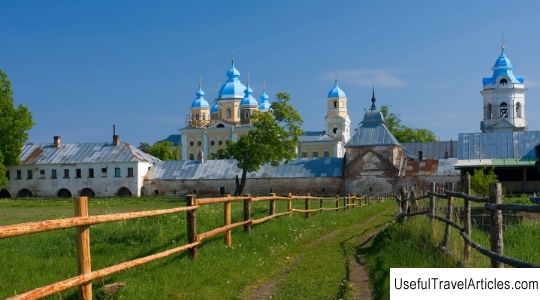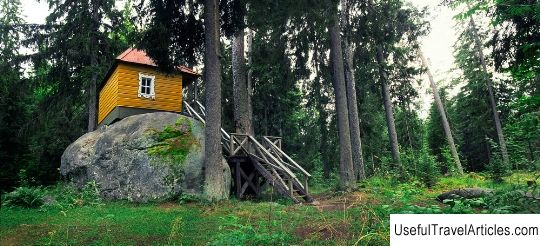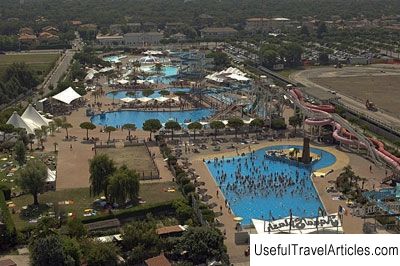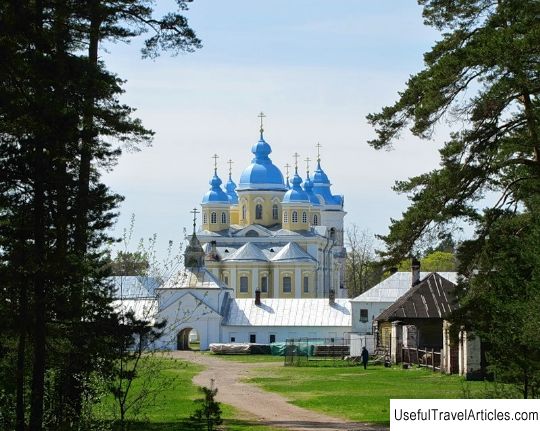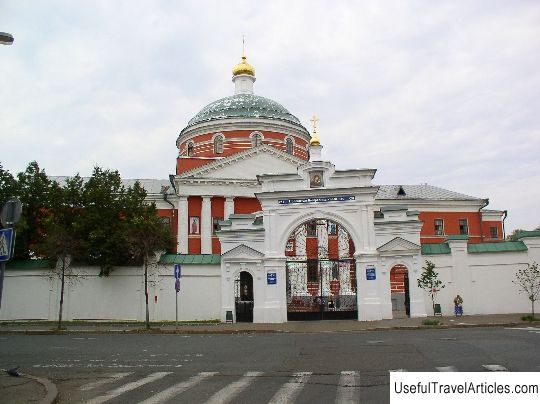Kazan skete of the Konevsky monastery description and photo - Russia - Leningrad region: Priozersky district
Rating: 8,6/10 (900 votes) 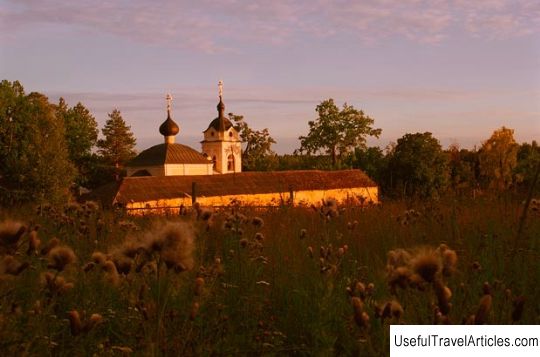
Kazan skete of the Konevsky monastery description and photos - Russia - Leningrad region: Priozersky district. Detailed information about the attraction. Description, photos and a map showing the nearest significant objects. Photo and descriptionThe Kazan skete, consecrated in honor of the Kazan icon of the Mother of God, is located on the island of Konevets, located in the southwestern part of Lake Ladoga. The length of the island does not exceed 8 km, with a width of 3 km. The Nativity of the Theotokos Monastery stands somewhat distant from most of the monastery buildings, in the central part of the island at the highest point, the so-called Holy Mountain, whose highest height reaches 34 m. The construction of the Kazan Skete dates back to the period from 1794 to 1796 years. The construction process took place under the rector of the Nativity of the Theotokos monastery, Father Adrian, who took office in 1790 by order of Metropolitan Gabriel from the city of St. Petersburg. It is known that the Monk Arseny, who was the founder of the temple in the name of the Nativity of the Virgin Mary, lived on the Holy Mountain for 3 years in complete solitude. Father Adrian was also inclined towards a hermitic life while observing a strict fast. He decided to go to St. Petersburg and asked Metropolitan Gabriel for permission to build a church in honor of the Kazan Icon of the Mother of God. It was decided to name the skete in the name of the icon of the Kazan Mother of God because of the appearance of the Mother of God during the life of Father Arseny, to the successor of Arseny, as well as to an elder named Joachim, which happened just on the Holy Mountain. In the middle of 1794 it was the construction of the skete began. For this, a brick factory began its work near the Holy Mountain, supplying the material necessary for the work. The construction of the temple took only two years, including the construction of a bell tower and six brotherly cells. The consecration of the temple took place in the summer of June 13, 1796. Father Thaddeus became the inhabitant of the new skete, who lived here until 1799, after which he was buried in the eastern side of the church. In 1817, the wooden roofs of the temple were replaced, and the buildings were rebuilt. The length of the temple building was 18 m, width - 7 m. The wedding of the temple is made in the form of a small onion dome. From the east there are altar apses, from the west - a single-tier bell tower with seven bells. The weight of the largest bell reached 738 kg, the average - about 245 kg. One of the bells was donated to the temple by the merchant Tselibeev, and several bells were donated by the wealthy and distinguished merchant F. Nablikov. As for the stylistic solution of the temple, it is to a greater extent built in the traditions of ancient Russian temple architecture with some features of the 18th century baroque. The inner walls of the church, the bell tower and the temple are completely whitewashed, besides, the temple has practically no special decorations. Around the church building of the Kazan Skete there are monastic buildings, which form a large rectangle along the perimeter of the skete with a length of 44 m and a width 30 m. It was in these buildings that there were once not only monastic cells, but also numerous storerooms and a spacious refectory. In the warm season, the monks of the skete spent their time working in the garden, and also procured for heating firewood period. In the autumn, the grown crops were harvested and vegetables were harvested. The cold season passed for the inhabitants of the skete for needlework. If the brethren had time, then most often it was carried out while reading patristic books or the Gospel. According to the traditions of the Kazan Skete, monks had to live independently, providing themselves with everything they needed. The food had to be necessarily lean, without milk and fish, and consisted of vegetables with bread, vegetable oil and seed juices. The reading of the Psalter was always held in the church in order to commemorate the benefactors of the skete. Today, life is being revived in the Kazan skete. It is worth noting that now the hieromonk Father Barakiel, who came to this region from Baalam, lives in it. In order not to disturb his peace, it is not allowed to enter the inner part of the skete without receiving a special blessing. Not far from the Kazan skete there is a path that runs along the Holy Mountain and ends at the forest edge. From here there is a trail leading to a dense part of the spruce forest, after which it goes down. There used to be a staircase here, but now you can only see destroyed stone boulders.       We also recommend reading Alexander Nevsky Cathedral (Aleksander Nevski katedraal) description and photos - Estonia: Tallinn Topic: Kazan skete of the Konevsky monastery description and photo - Russia - Leningrad region: Priozersky district. |
